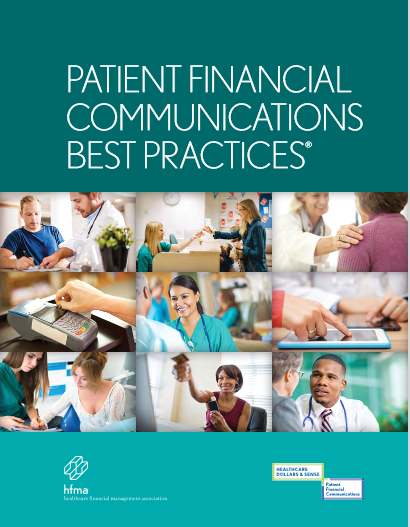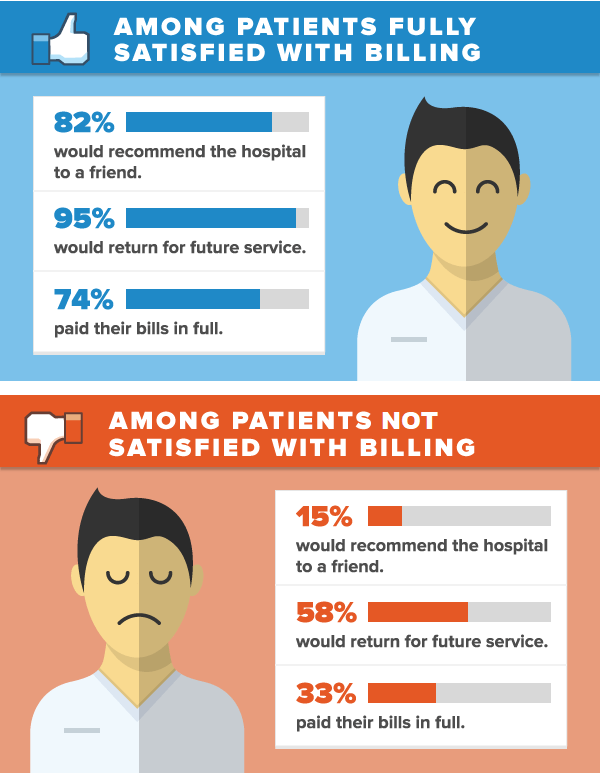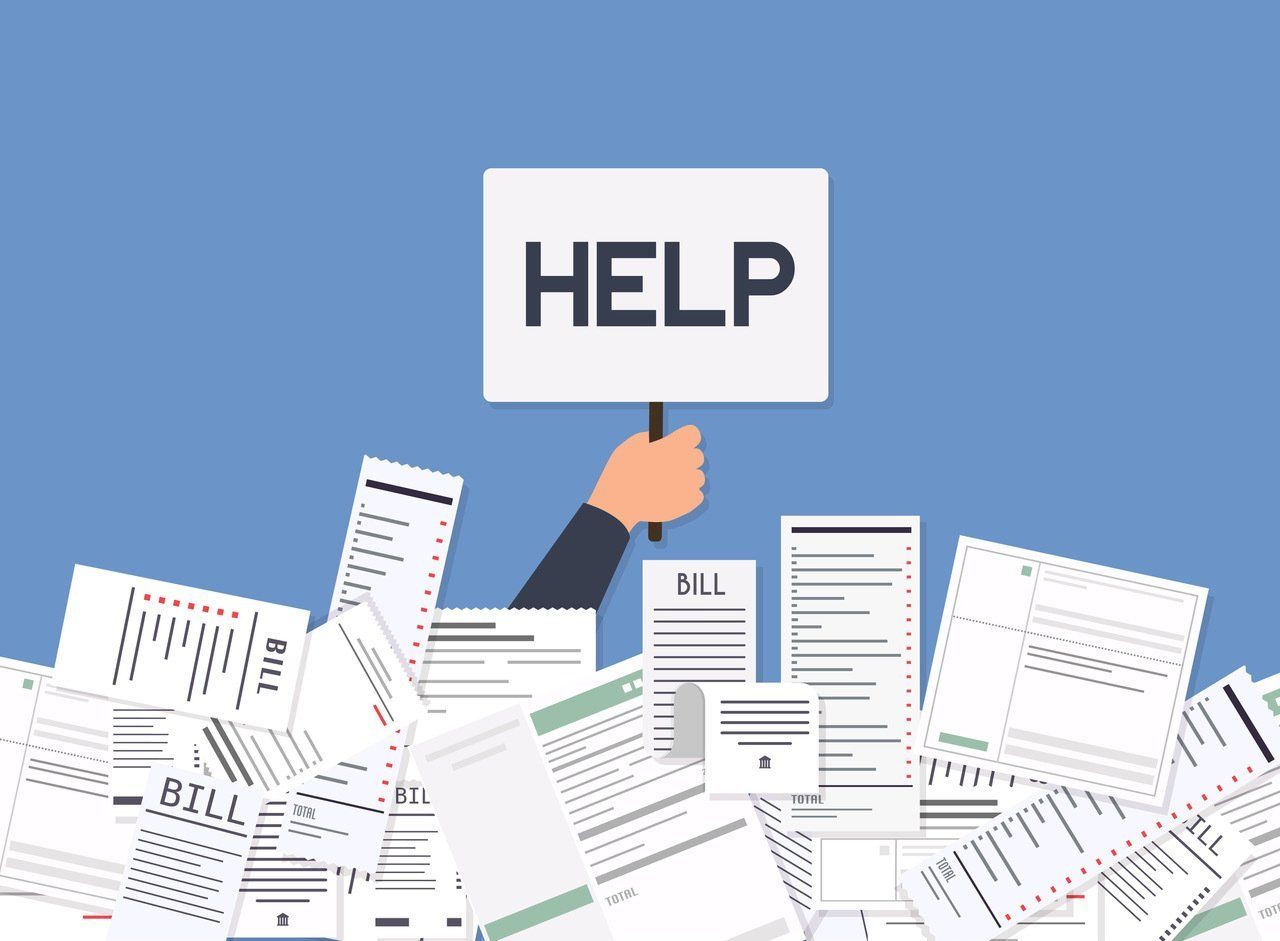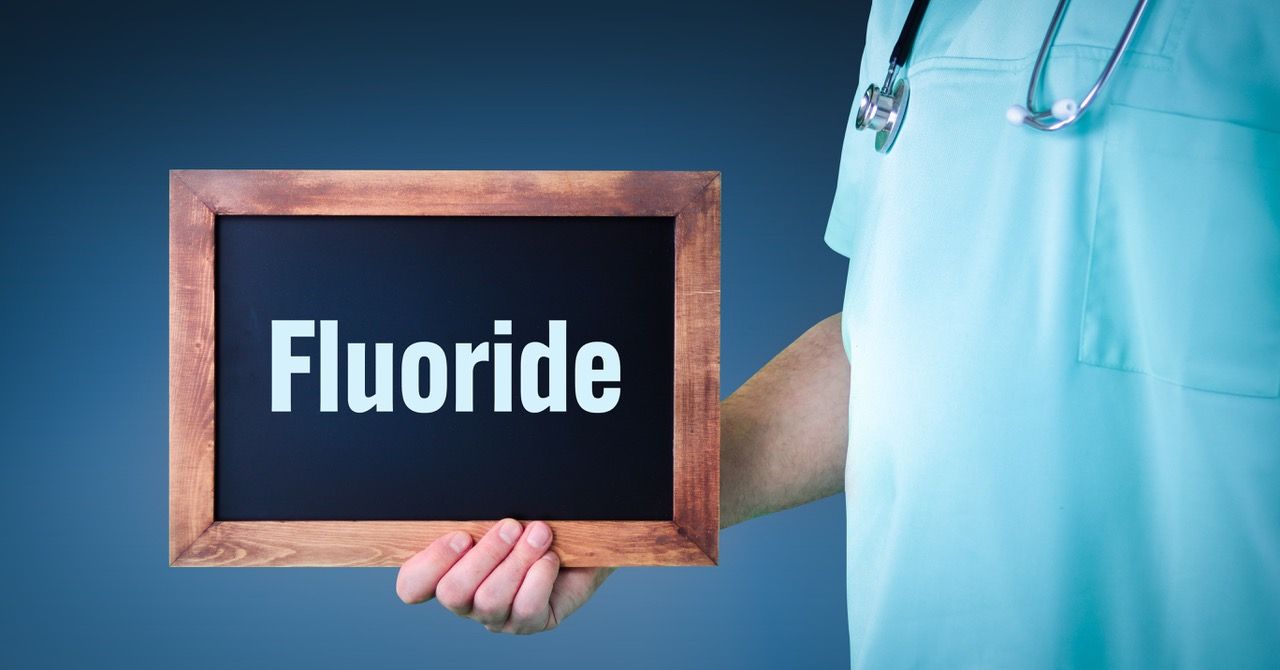Improve Collectability with Patient-Friendly Billing®

How to Provide a Positive
Patient Experience on
the Back End
At the same time, confusing, inaccurate or unfriendly billing methods can prevent patients from remitting timely payment.
Patient-friendly billing can improve your chances of being paid on time. The Healthcare Financial Management Association (HFMA) has identified a serious need for financial information to be communicated in a “clear, concise, correct and patient friendly” manner. (See sidebar, “The Patient Friendly Billing® Project.”)
This need has been heightened by the COVID pandemic, causing an increase in patient demands for multiple payment options, price transparency, and patient-friendly medical billing.
Best Practices for Medical Billing
Providing your patients with a positive billing experience can boost your approval ratings on social media sites and generate word-of-mouth referrals. In fact, surveys indicate that 88% of patients with a “highly positive” billing experience would recommend a medical practitioner to their friends.

The Patient Friendly
Billing® Project
The HFMA’s Patient Friendly Billing® project offers numerous downloadable resources to help care providers improve their medical billing processes. These include:
- Consumerism in Health Care
- Reconstructing Hospital Pricing Systems
- Patient Financial Communications Best Practices
- Patient Friendly Billing Project: Case Studies in Customer Service
What’s more, almost 80% of patients who were satisfied with their billing experience pay their bills in full or over time.
You can increase the likelihood of a positive billing experience by adopting the following best practices:
In Their Shoes
When designing your billing process and financial communications, consider the patient’s perspective. For example, offer the option to include a family member or other advocate in the financial conversation with your patient.
It’s also a good idea to provide them with contact information for financial assistance programs at their final outpatient visit or when being discharged from an inpatient facility.
Keep all communications courteous and respectful. If at all possible, do not convey financial information during the medical encounter. This should be a separate conversation.
Consolidate Your Billing
You can streamline the billing process and prevent duplication by coordinating with other healthcare providers and insurers.
Even if your practice is not yet sufficiently integrated to provide this service, you can still work with your healthcare partners to develop a consolidated statement. Patients can feel confused and frustrated when they receive multiple bills for what they perceive as a single care event, The result is often slow pay or no pay.
Say What You Mean
Use easily understood terminology and formatting in your financial communications.
When medical statements are written in clear, jargon-free language, patients can immediately identify the purpose of the communication. For example, place balance information toward the top of the statement, so patients can quickly determine what they need to do.
--Article Continues Below--

Be Concise
Keep billing communications succinct. Provide the minimum amount of detail needed to relay your message. Long, drawn-out statements are a both confusing to the patient and a waste of time for the provider.
Accuracy, Accuracy, Accuracy
Make sure your staff double-checks all statements for accuracy. These bills should never contain incomplete information, typos or other errors.

Does Your Practice Have a Designated Billing Rep?
You can enhance your billing process by designating a single customer service contact to address patients’ billing questions.
Connecting with one particular individual who is knowledgeable in all financial aspects of their care significantly reduces the possibility of patient ill will or frustration.
Elevating this service even further, the designated representative could offer to contact government agencies, insurance companies, or other healthcare providers on the patient’s behalf.
Sending the wrong medical bill is one surefire way to lose that patient to a provider who’s better organized.
Patient Feedback
Gather patient feedback regarding your billing practices, so that you can continually review and improve your methods. Some of the most effective feedback tools are email surveys, website comment forms, and social media interaction.
Why It All Matters in the End
Your medical office staff represents your practice during the patient’s first and last encounter with your organization.
Initial conversations during registration are critically important; however, if the patient’s final experience is negative, his opinion of your overall service will be a poor one – even if the experience on the front end was positive.
Patient-friendly billing can improve the back end of this process to enhance patient satisfaction, reinforce patient loyalty and generate referrals. But it also increases the likelihood of timely payments, significantly reducing your risk of bad debt.
Patient Friendly Billing® is a proprietary trademark of the Healthcare Financial Management Association (HFMA).
Sources:
Featured Image: Adobe, License Granted
RevCycle Intelligence
Healthcare Financial Management Assn
Medical Group Management Association
Patient Engagement Hit
Recent Posts











Share On: